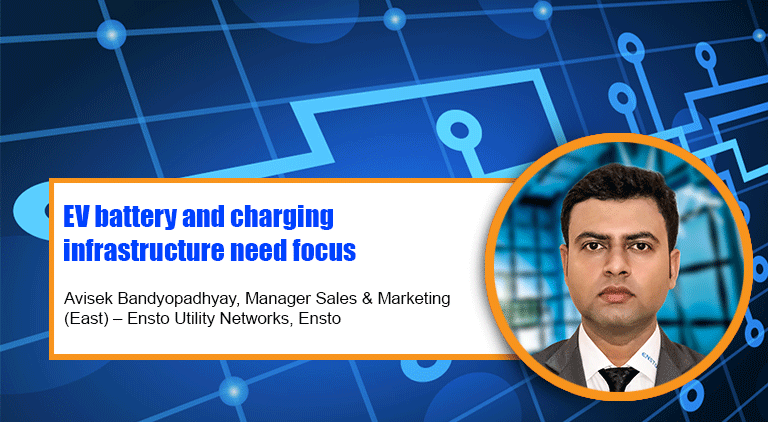EV battery and charging infrastructure need focus
By EPR Magazine Editorial March 27, 2020 3:21 pm IST
By EPR Magazine Editorial March 27, 2020 3:21 pm IST

Avisek Bandyopadhyay, Manager Sales & Marketing (Eastern Region) – Ensto Utility Networks,Ensto India Private Limited, talks about the challenges impeding the market growth of electric vehicles (EVs) and how the company is addressing these challenges step by step.
What measures are being taken to address the lack of a strong charging infrastructure and battery technology for EVs?
In India, the main problem with the electric vehicle charging system is that we have limited technological capacity. The main battery technology used in the country is lithium-ion. We have very few domestic manufacturers of EV battery technology. So, at present in India, we are importing most of the battery components from Europe, the US, China, Korea, and Japan. That is a major obstacle for this technology. The second aspect is that we have a lack of charging infrastructure. Overall, every state in India has a lack of charging infrastructure. The government is trying to develop the infrastructure, and in few states, they have installed slow chargers like AC chargers. Few public and private utilities had also floated some tenders earlier for DC chargers; few utilities are still doing pilot projects on small capacity chargers. India has to develop the charging infrastructure further to allow this market to grow. At Ensto, we have both AC and DC chargers and have already installed them in Delhi-NCR region. Many public and private utilities also use our chargers and they have been running successfully since the last 2 years.
What are the changes that need to be made in the power grid to carry the extra load for charging EVs? How can smart grids contribute in this regard?
To boost the power grid to carry the extra load for charging EVs, India will need more substations. With respect to smart grids, all the electric vehicle chargers can communicate to the smart grid or SCADA directly through open communication protocol. You can get relevant data you need from your SCADA system or the Android app that we provide. With the help of this data, you can analyse how much time and power the charger has consumed. You can also give the access to the app data to your consumer, generate a bill and get payment online. These are the kinds of smart features we have in our charging system. Smart grid is basically a virtual grid that is connected to a server. So, if you send your data directly to the server, it will be connected to the network. With the help of different sensors, IEDs, smart meters and other communicable electrical/electronic systems, the server can send useful data to your devices, e.g., your mobile phones, laptops etc. and you can access the data from there. So, electric vehicle chargers can also directly communicate the data to you and tell you how much power has been consumed by the charger and how many vehicles have been charged with the charger on a per day and per month basis. You can also restrict the charging unit per day to save power. Ensto offers Dynamic Load Balancing features to high-end chargers, which gives benefits to install more chargers without the need to increase the capacity of grid connection in the station. Moreover, everything can be managed from your app or your laptop, so you do not need to physically visit the charging site.
We use cookies to personalize your experience. By continuing to visit this website you agree to our Terms & Conditions, Privacy Policy and Cookie Policy.